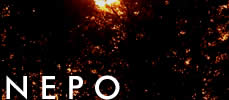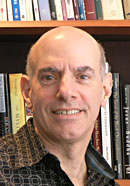| in progress |     |
|
The Promise Of The Inner World BOOK DESCRIPTION Life has always hidden like a secret in the open. And living has always been the art of drawing life out by staying in the open ourselves. In this, the promise of the inner world is nothing less than making God visible through the full use of our humanity. Not only might we live more fully, but we will see and receive the totality of life more completely. To participate in all this, it is as important to develop who you are and how you learn as much as what you know and what skills you gather. It doesn’t matter how powerful or precise a tool is, if the hand that holds it is undeveloped. Just so, with who we are and how we see. Knowledge, of all kinds, is wasted, if there is no way of knowing to hold it and use it. I imagine that, before that anonymous, prehistoric being discovered and used the wheel, there was another who, unknowingly, carried it around instead of using it. This has gone on forever. How many times have I carried my heart and my love around instead of using it? Or the truth? Or my courage? It takes an awakened being to apprehend that what we carry can carry us. A realized being to turn a stone into a wheel, or a burden into a truth, or numbness into love. And a compassionate being to give what they’ve found to others. What often keeps us from the promise is our obsession with walls, which all go back to one wall. We never talk about the wall but we stand behind it, as if it’s necessary to retreat there in order to understand life. Once in a while we even stand on the wall, thinking we’re brave, and even in awe at the view. But slowly, almost imperceptibly, we make a shrine of the very thing that holds us back. And though I am a lifelong seer, I must say that seeing, after all, is not the same as entering, and understanding is not the same as living. True, seeing can lead us to entering and understanding can lead us to living. Yet somehow, along the way, we settle for watching as a substitute for actual experience. And so, we make our walls tall and full of glass. But seldom do we open the windows or go outside. This is not new or particular to us. It’s just our turn. And so, this book explores the promise of the inner world that waits behind all walls. In writing this, I am trying to take down my own wall. So, I invite you to do this together. I’m beginning to see that if you take away all a person knows, you are left with the mouth of a fish gulping water as fast as it can. If you take away a person’s coverings, you are left with the naked freedom of a star. If you take away all a person has done, you are left with a soul eager to build. And if you take away what a person has saved, you are left with a life that has to live now. It is becoming clear that stripped of too many thoughts, we grow wise as a stone. Stripped of too many accomplishments, we grow possible like the sun. And stripped of what we hoard, we grow immediate. So taking away is not just about loss. Like it or not, we are forced, again and again, to the nakedness of freedom, to the eagerness that wants to build its way out of nothing, and to the poverty of time that has to live now. If blessed, we wake, again and again, gulping our way into tomorrow.
EXCERPTS FROM IN ORDER TO MOVE THROUGH TIME I remember Uncle Ed, eighty-four, a healthy bachelor farmer with a broad smile; nothing wrong with him but the loosening of his mind. We’d sit at his kitchen table, along with his brother-in-law, Donald, a more taciturn farmer, and Ed would burst into a smile, point to a corner of the ceiling and declare, “Well, look at that! I never saw that bird’s nest before!” Donald, who was a kind if literal man, couldn’t tolerate this dissonance of craziness or holiness that enabled Ed to see what the rest of us couldn’t. He’d storm out to do his chores. After a long silence, silence, I would ask Ed “What kind of nest is it?” It doesn’t matter what he went on to describe, that the deep blue bird in that nest would look at Ed and glow. What mattered was if I could venture beyond my own comfortable description of reality to visit his. I’ll never know if it was his dementia that created the bird or the sweet erosion of his eighty-four years that made the blue bird visible. But that we can keep that possibility alive seems essential, lest we reduce the mystery of life to the little we have experienced. To dismiss such layers of reality is like me showing you a burnt match, though the fire it lit has gone out, and you never believing that there was a fire. In order to move through time, we often need to put our heads down to get from here to there, but we don’t have to close our minds and hearts along the way. Yet even in our trudging, it is the great moments that we can’t sort or order that lift our eyes and bring us into eternal time, which break our notion that the form of reality we are experiencing is the only one. Along the way, it is moments of Oneness—like birth, death, great loving, suffering, and beauty—that jar us into an experience of time that defies counting. Because of these charged moments that stretch or break our sense of ordinary logic, infants see no distinction between their breath and the wind, and old uncles see blue birds glowing in the kitchen ceiling, and after making love the picture of a six-year old with AIDS on the news makes me cry.
FROM THE IMAGINAL CELL Our whole inner world is reality. As Marilyn Ferguson described in The Aquarian Conspiracy almost forty years ago, there exists an imaginal cell in all living things, a primary cell in which the image of the fully grown organism is represented and toward which the innate life force of that organism then grows. Life, then, becomes the journey of being impeded from fulfilling that DNA of Wholeness and the story of how we negotiate those impediments or even turn them into teachers along the way. When the poet Rilke urges us to live the questions, he is offering an interior way to channel our life force toward that imaginal cell we call the soul, which when inhabited opens the entire world of Spirit that we carry encoded in our small, little life. With this in mind, honest dreaming is less fantasizing or wishful thinking and more realizing what we are born to. The humanitarian Carol Hegedus wisely discerns, “An image isn’t something we think of, but something we open to.” The problem, of course, comes when we preclude glimpsing our imaginal cell by imposing ambitions and desires over it and think that is our calling. All of this points to a central fact, if you believe it as such: that the inter-related wholeness of life is already present and fully formed, already intrinsic; just needing to be lived to be manifest and made visible. This same worldview is what informed Michelangelo as he sculpted, for he believed that the finished statue was already waiting in the uncut marble. His getting out of the way and being clear enough and still enough to glimpse it was his process of inspiration. The fully formed statue waiting in the stone was the imaginal cell that sparked his creativity. Then he lived his days chipping away the excess stone to release the waiting statue into the world. In many ways, the vision and release of our deepest, truest self works the same way. The promise of the inner world is to draw us into this timeless imaginal process, if we will let. The promise is nothing less than waking from everything that encases us with the gasp of air the first human let out as the world rushed in. |



|




